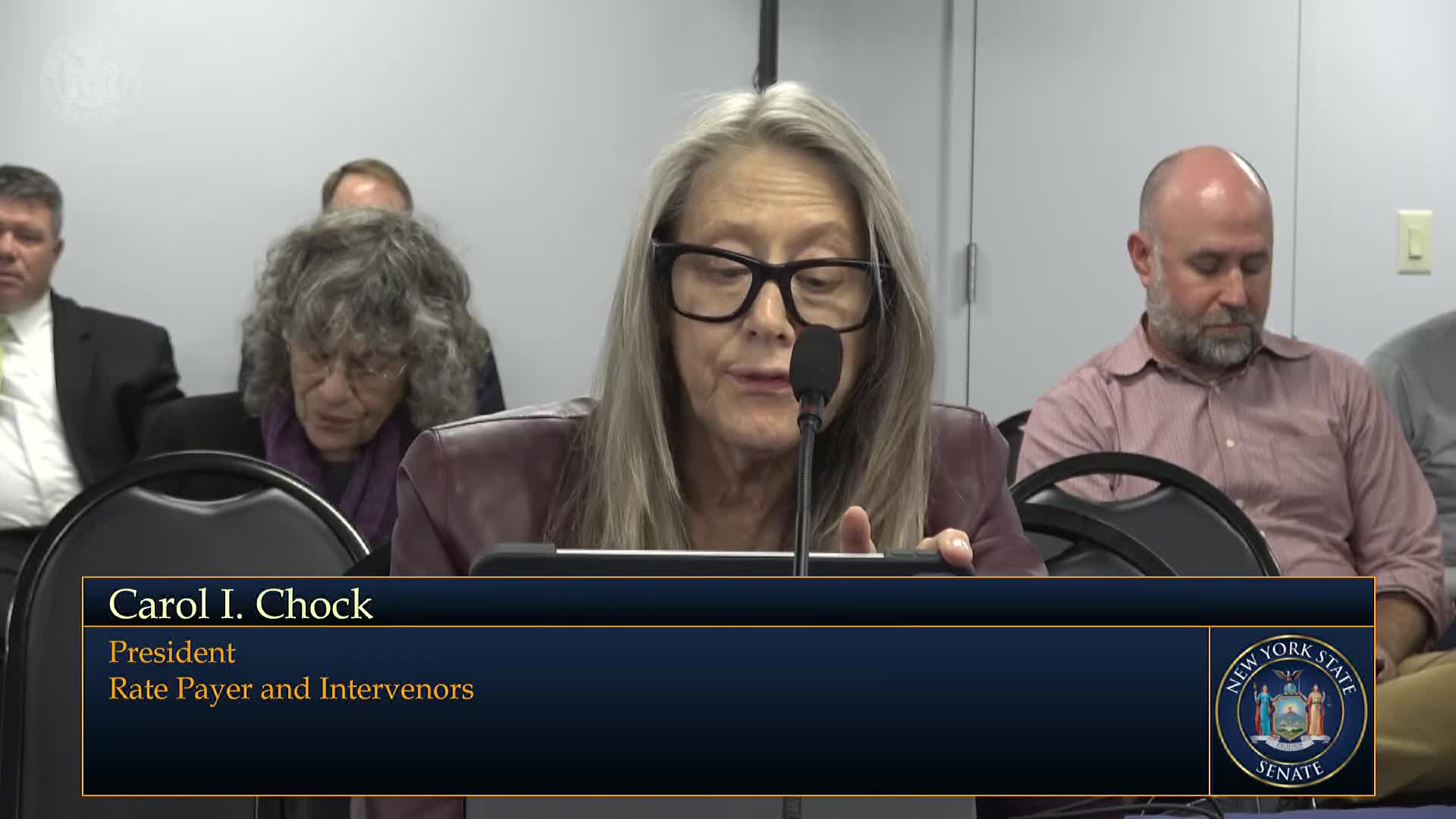New Yorkers Face Rising Utility Bills Amid Affordable Housing Challenges
October 01, 2025 | 2025 Legislature NY, New York
This article was created by AI summarizing key points discussed. AI makes mistakes, so for full details and context, please refer to the video of the full meeting. Please report any errors so we can fix them. Report an error »

In a recent New York State Senate Joint Public Hearing, critical discussions centered around the pressing issues of affordable housing and rising utility costs, highlighting the growing financial strain on New Yorkers. The meeting, held on September 30, 2025, revealed alarming trends that could reshape housing policies and economic strategies in the state.
One of the key points raised was the significant increase in utility bills, which now consume up to 24% of household incomes for some residents. This stark reality challenges previous assumptions that utility costs would remain manageable, typically expected to be around 6% of household budgets. The implications of this shift are profound, particularly for first-time homebuyers and those relying on affordable housing programs. Stakeholders, including mortgage bankers and affordable housing providers, are now grappling with the need to reassess their guidelines and support systems in light of these changing economic conditions.
The discussions also touched on the broader economic impact of energy policies, particularly the reliance on fossil fuels. Concerns were raised that maintaining current fossil fuel practices may not yield the anticipated economic benefits, as evidenced by past studies on hydrofracking. The meeting underscored the necessity of conducting thorough cost-benefit analyses to understand who truly benefits from these energy policies and who bears the financial burden.
Furthermore, the historical context of New York's public service laws was examined, emphasizing the importance of equitable access to utility services. The laws were designed to ensure that all communities, regardless of their economic status or geographic location, receive necessary services. This principle remains vital as the state navigates the complexities of modern energy demands and infrastructure needs.
As the meeting concluded, it became clear that New York faces significant challenges in balancing energy costs, housing affordability, and economic growth. The discussions set the stage for future policy considerations and potential reforms aimed at addressing these critical issues. Stakeholders are now tasked with finding innovative solutions that prioritize the well-being of all New Yorkers while ensuring sustainable economic practices.
One of the key points raised was the significant increase in utility bills, which now consume up to 24% of household incomes for some residents. This stark reality challenges previous assumptions that utility costs would remain manageable, typically expected to be around 6% of household budgets. The implications of this shift are profound, particularly for first-time homebuyers and those relying on affordable housing programs. Stakeholders, including mortgage bankers and affordable housing providers, are now grappling with the need to reassess their guidelines and support systems in light of these changing economic conditions.
The discussions also touched on the broader economic impact of energy policies, particularly the reliance on fossil fuels. Concerns were raised that maintaining current fossil fuel practices may not yield the anticipated economic benefits, as evidenced by past studies on hydrofracking. The meeting underscored the necessity of conducting thorough cost-benefit analyses to understand who truly benefits from these energy policies and who bears the financial burden.
Furthermore, the historical context of New York's public service laws was examined, emphasizing the importance of equitable access to utility services. The laws were designed to ensure that all communities, regardless of their economic status or geographic location, receive necessary services. This principle remains vital as the state navigates the complexities of modern energy demands and infrastructure needs.
As the meeting concluded, it became clear that New York faces significant challenges in balancing energy costs, housing affordability, and economic growth. The discussions set the stage for future policy considerations and potential reforms aimed at addressing these critical issues. Stakeholders are now tasked with finding innovative solutions that prioritize the well-being of all New Yorkers while ensuring sustainable economic practices.
View full meeting
This article is based on a recent meeting—watch the full video and explore the complete transcript for deeper insights into the discussion.
View full meeting
